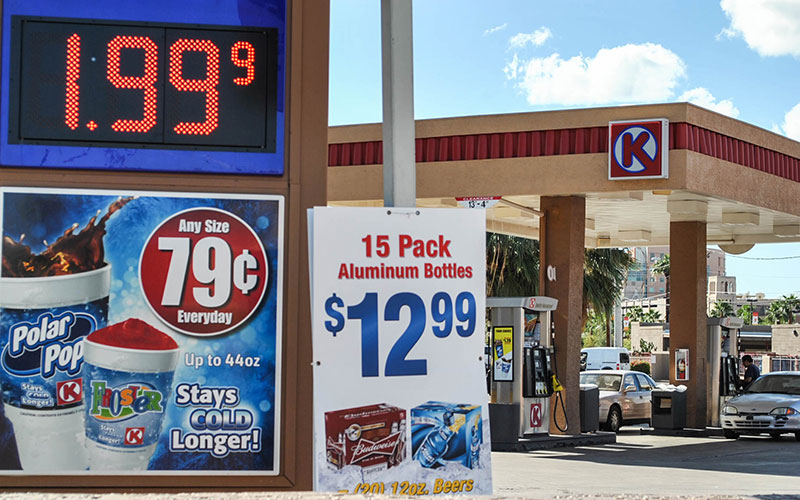The average American household has saved $700 from dropping gas prices so far this year, but it appears Arizonans are putting most of that savings right back into the economy, according to a recent study by the JPMorgan Chase Institute.
Arizonans spent about 2.3 percent of their monthly income on gasoline – or about $123 a month – between December 2013 and February 2014 when gas prices were high, according to the study.
Now that gas prices have dropped, they spend about 0.6 percent less on gas a month, saving about $31.
But Chase researchers said Arizonans spend about 80 percent of that savings. That’s about $24.80 a month.
The report, which used debit and credit-card information from 57 customers nationwide to conduct the study, explains that consumers are putting less of their savings toward paying off debt and beefing up savings accounts and more into the economy.
Where do they spend it? Mostly on restaurants (18 percent) and groceries (10 percent), the report said. But they also used that extra cash on departments stores, entertainment, electronics and appliances.
Chase officials warned consumers to watch their spending carefully.
“The windfall gain from lower gas prices presents consumers with an opportunity to save,” according to Chase officials. “Given the level of volatility that consumers experience in income and spending, and the need for consumers to build a financial buffer to mitigate that volatility, consumers might be better served to save that extra money.”
Last week, Arizona’s gas prices dropped below the national average of $2.19, according to AAA Daily Fuel Gauge Reports. The state average was $2.15.
Arizona has not been below the national average since June. Tucson held the lowest prices in the state, about $2.01. Flagstaff had some of the highest price averages, about $2.43.
Fuel prices in Arizona have continued to drop for more than 108 consecutive days, said Michelle Donati, a spokeswoman with AAA Arizona.
“Consumers are saving considerably at the pump,” Donati said. “The last couple of weeks, we are finally falling back below the nationwide average, so that’s the trend that hopefully we’ll see continue.”
